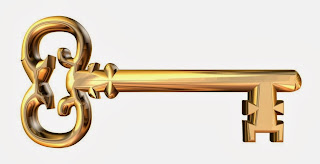Carcass was a 4-week long project which
enabled us to get up to speed for our main project during our MA phase of
education. Although it was considered only as a starter, during this period I
managed to gain much useful knowledge in the pre-production field which I’ll
try to sum up in the next few paragraphs:
During the project we were required to
draw the set which was essential while acquiring our initial draughting skills.
Draughting sets as a part of the
designer’s work could be improved mainly by many practice on illustrating
different rooms and halls. The more you draught, the better you become. A key
role to the white paper work is also added by the knowing of some key terms.
· The elevation is a drawing which shows the
look of the walls in the different sets. For a normal square room the extended
elevation would look like a rectangular from the four continuously
running walls with separated with a line on each corner. There could be
different elevations depending on the complexity of the shapes which are
illustrated on each wall. There should be no furniture and any items on the
elevations unless its part of the walls. Elevations could be from one side,
front, extended or section in terms of which enable the designers idea to be
understood more easily. One example for that could be if the walls are covered
by one color, striped or simple shaped wallpapers. In this case an extended
elevation is enough to illustrate their outlook. On the other hand, if there is
a complicated shape or drawing on the walls there should be separated zoomed
elevation for this particular wall in order to allow the depict even the
smallest details.
· The
set plans represents the sets looked
from the top. There are two types of set plan – with and without furniture. The
set plan without furniture is drawn on the same sheet as the elevation
because the walls on the set plan are
marked with the same letters on the elevation. And the other set plans with
furniture are drawn on the studio plan. While draughting a set plan it’s
important to think of the possible camera position and to leave enough space
for cameras (3 squared meters). Plans always include door, which has to be
drawn open in order to mark the space they will take. It’s also very important
every piece of paper to include a box with the name of the production, name of
the company, the location, director’s name, designer’s name and contacts, the
scale and the drawing title (examples : “Studio plan Pinewood D”, “Jim’s flat –
set plan and elevations”, etc.)
· Another
obtained skill during this short project concern the script breackdown. This process basically includes the coloring
of the script paper while marking the different elements. The elements include
parts of the day of each scene (night scenes in one color, day scenes in other),
all the props in a different color, names of the characters in another color,
etc. Thus, a script also could give an idea of some of the required props for a
production and their type. Which the active props (involved in the characters
actions),the dress props (part of the background) and the prop makes (which
should be made especially for the production) would be. The other props which aren’t
mentioned in the scenery should be written in a piece of paper divided into the
rooms they’d be possessed
As a part of our educational enrichment were also some initial product
design skills, acquired while drawing our own ideas for prop makes (*different
types of props were also some of the new terms). In the beginning I had missed
to add dimension but afterwards in my feedback I met the their requirement.
Finally, another useful outcome of this project was that we came across some
computer programmes which could be very useful in the field of set design such
as AutoCad, 3D max, ect, which we could start to build our skills on.


































